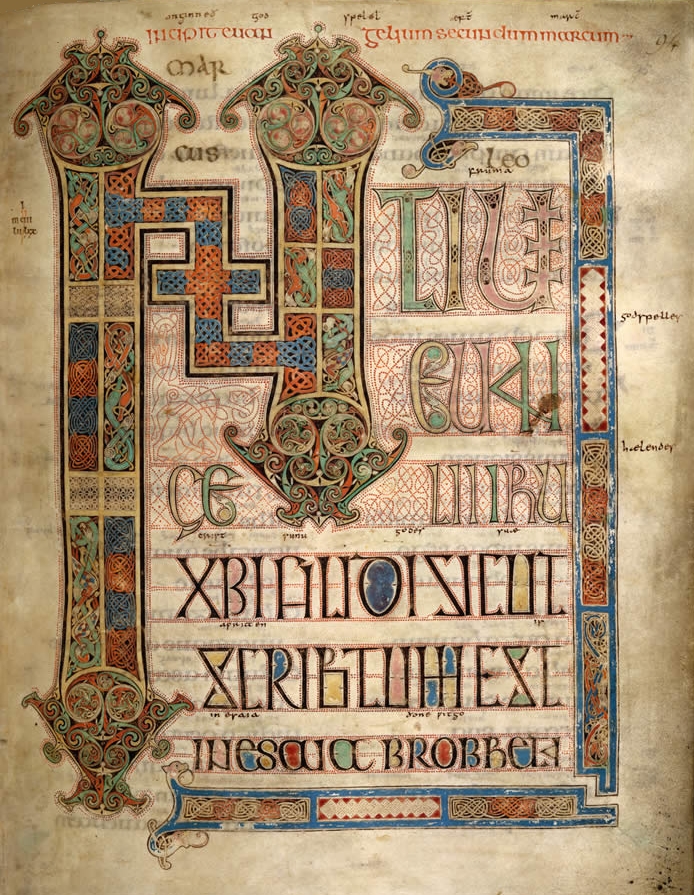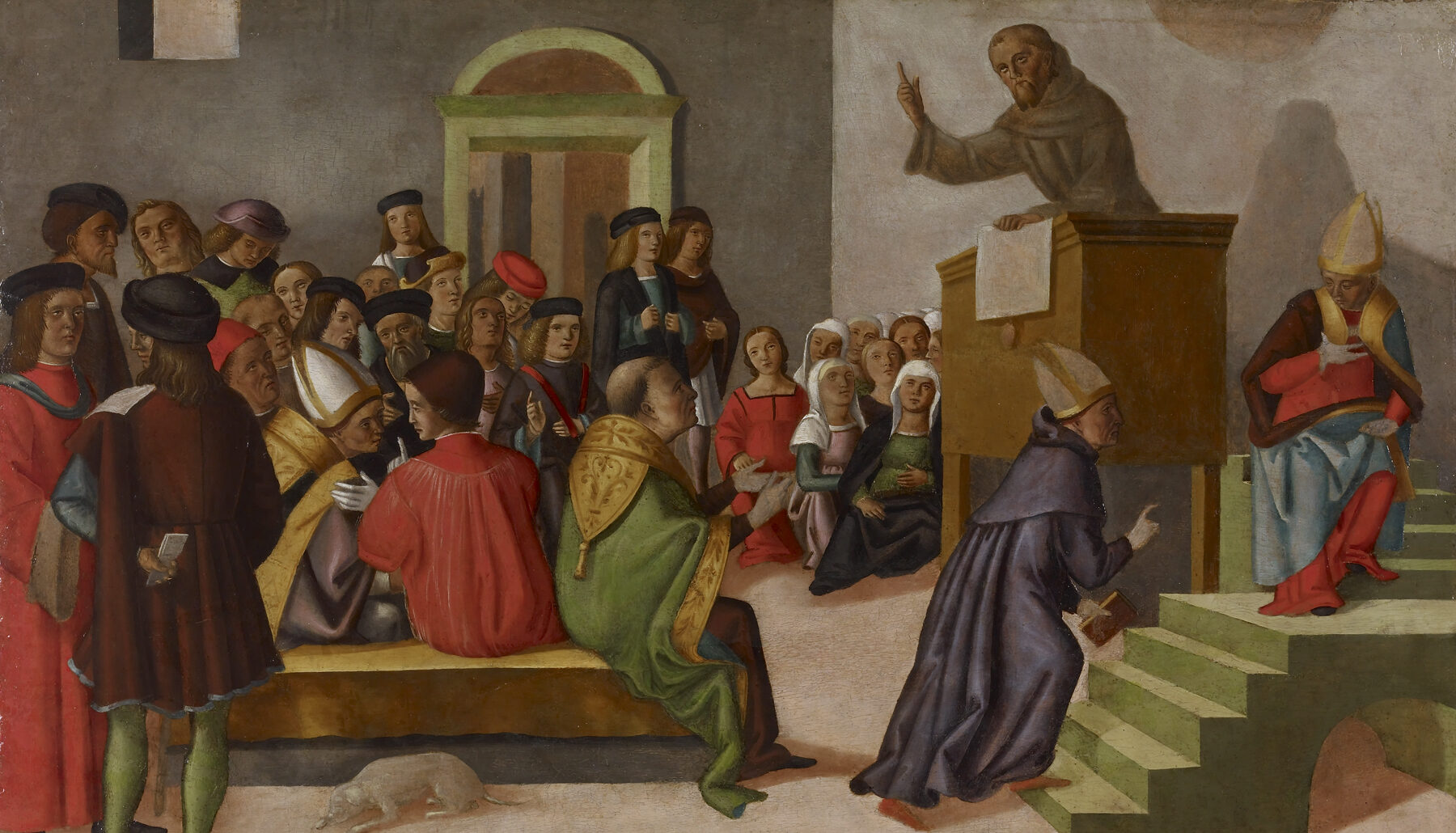
John the Apostle stands as a towering figure in the annals of Christian history, a person whose life and perceived contributions have shaped faith, theology, and art for millennia. Known by many appellations — Saint John the Beloved, Saint John the Theologian, John the Evangelist, John of Patmos, and the Beloved Disciple — his narrative is rich with biblical accounts, ecclesiastical traditions, and scholarly debates that continue to captivate and challenge. His story, as presented through various sources, offers a compelling look into the foundational years of Christianity and the personal connections forged with Jesus of Nazareth.
From a humble beginning as a fisherman on the Sea of Galilee, John was called to a life far beyond the nets, becoming one of the Twelve Apostles, an inner circle confidante of Jesus. His journey from an impetuous ‘son of thunder’ to the tender ‘disciple whom Jesus loved’ reflects a profound transformation. This evolution, alongside his crucial role in the early church and the attribution of significant New Testament writings to his name, underscores his unparalleled impact on Christian thought and practice.
This in-depth exploration will delve into the multifaceted life of John the Apostle, examining his biblical portrayal, his intimate relationship with Jesus, and his vital contributions to the nascent Christian community. We will navigate the traditional narratives and historical nuances that define his identity, setting the stage for understanding the later complexities surrounding his legacy.

1. **Identity and Family Background**John the Apostle was born into a family of Jewish fishermen residing on the shores of the Sea of Galilee. He was the son of Zebedee and Salome, a detail mentioned in church tradition as his mother. His elder brother, James, was also among the revered Twelve Apostles, linking their family directly to the very core of Jesus’s ministry.
According to some traditions, Salome was believed to be the sister of Mary, the mother of Jesus. This familial connection would have made Salome Jesus’s aunt, thereby establishing John the Apostle and his brother James as Jesus’s cousins. This familial proximity, if accurate, would have provided an even deeper layer to their relationship with Jesus, predating their formal calling as disciples.
Generally listed as the youngest of the apostles, John’s early life was presumably spent in the rigorous profession of fishing alongside his father and brother. This background would have instilled in him a resilient spirit and a practical understanding of daily life, qualities that would later serve him in his apostolic mission. His family’s trade provided the setting for Jesus’s initial encounter and call.
Read more about: 15 Critical Digital Privacy Mistakes That Expose You Online

2. **The Call to Discipleship and Early Encounters**The Synoptic Gospels — Matthew, Mark, and Luke — vividly recount Jesus’s call to Peter, Andrew, and the two sons of Zebedee, James and John. While they were fishing in the Sea of Galilee, Jesus approached them and bid them to follow him, a pivotal moment marking their entry into his inner circle. This immediate response from Zebedee’s sons underscored their profound commitment.
Beyond this, John the Apostle is traditionally believed to be one of two unnamed disciples mentioned in John 1:35–39. This passage describes how, upon hearing John the Baptist identify Jesus as the “Lamb of God,” these two individuals followed Jesus and spent the day with him. On this basis, some traditions suggest that John was initially a disciple of John the Baptist before becoming one of Jesus’s earliest followers.
This initial encounter and subsequent calling highlight John’s readiness to abandon his former life to pursue Jesus. His prompt acceptance of the call laid the foundation for his deep and personal relationship with the Messiah. The transformation from a local fisherman to a dedicated follower of Jesus signifies the profound impact of this early discipleship.
Read more about: The Transformative Journey of Paul the Apostle: A Deep Dive into His Life, Conversion, and Enduring Theological Legacy

3. **”Boanerges”: The Sons of Thunder**Jesus himself bestowed a distinctive moniker upon James and John, referring to them as “Boanerges,” which is translated as “sons of thunder.” This designation likely pointed to a fervent, perhaps impetuous, aspect of their personalities, reflecting a passionate zeal that could, at times, manifest with intensity. This characteristic is illuminated by specific biblical episodes that reveal their temperament.
One such incident is recounted in the Gospels, where the brothers expressed a desire to call down heavenly fire upon an unwelcoming Samaritan town. Their eagerness to invoke divine judgment on those who rejected Jesus’s message prompted a rebuke from Jesus, demonstrating his teaching on grace and patience over immediate retribution. This event provided a clear example of the ‘thunderous’ nature Jesus observed in them.
Another telling episode occurred when John reported to Jesus that they had “forbidden” a non-disciple from casting out demons in Jesus’s name. In response, Jesus taught them a crucial lesson about inclusivity and divine alignment, stating, “he who is not against us is on our side.” These instances collectively illustrate the qualities that earned John and James their distinctive title, highlighting their zealous but sometimes misguided early faith.
Read more about: The Enduring Legacies of James: A Chronicle of Pivotal Figures and Profound Teachings
4. **A Member of the Inner Triumvirate**Within the larger group of the Twelve Apostles, John, alongside his brother James and Peter, formed an informal triumvirate. This select group enjoyed a uniquely close relationship with Jesus, being privileged with his presence at certain highly significant moments throughout his public ministry. Their names are consistently listed among the first four apostles in the Gospels and the Book of Acts, further emphasizing their prominent standing.
Jesus specifically allowed only these three apostles to be present at three pivotal occasions. One such event was the Raising of Jairus’ daughter, where they witnessed Jesus’s miraculous power over death firsthand. Their presence during this intimate moment underscored their special access to Jesus’s divine capabilities and his personal empathy for human suffering.
Another profound experience was the Transfiguration of Jesus, where they beheld Jesus in a glorified state, conversing with Moses and Elijah, an event confirming his divine nature. Lastly, they were the sole apostles accompanying Jesus during his Agony in the Garden of Gethsemane, sharing in his profound sorrow and anguish before his betrayal. These exclusive experiences cemented their foundational understanding of Jesus’s mission and identity.
Read more about: The Enduring Significance of Three: An In-Depth Examination Across Disciplines

5. **Preparation for the Final Passover Meal**As the time for Jesus’s final Passover meal, traditionally known as the Last Supper, approached, Jesus entrusted a crucial task to two of his closest disciples. He sent only Peter and John into the city to make the necessary preparations for this momentous gathering. This specific assignment highlights the deep trust Jesus placed in their capabilities and discretion, distinguishing them even among the inner triumvirate.
The Synoptic Gospels, particularly Luke, state that this meal was the Passover itself (Luke 22:7–9). However, the Gospel of John offers a different chronological perspective, indicating that the Passover meal took place on the following day (John 18:28). Regardless of this temporal distinction, the core detail remains consistent: Peter and John were indispensable to ensuring the sacred nature of this final communal meal.
Their involvement in arranging the Last Supper underscores their trusted position and active participation in the culminating events of Jesus’s earthly ministry. This intimate preparation for what would become one of the most significant meals in Christian theology further solidified their roles as key witnesses and participants in Jesus’s final acts of teaching and communion.
6. **The Enigma of “The Disciple Whom Jesus Loved”**The Gospel of John introduces a unique and profoundly significant figure referred to as “the disciple whom Jesus loved” (ὁ μαθητὴς ὃν ἠγάπα ὁ Ἰησοῦς). This phrase, or variations like “whom Jesus loved,” appears six times within the Gospel of John, but notably in no other New Testament accounts of Jesus. Tradition has long identified this beloved disciple with John the Apostle, although modern scholars engage in ongoing debate regarding this specific identification.
During the Last Supper, it was this disciple who, reclining beside Jesus, was asked by Peter to inquire about the identity of the betrayer. This intimate position, allowing him to lean on Jesus, signifies a closeness unparalleled among the apostles and reinforces the tradition of his unique bond with Jesus. It paints a picture of profound affection and trust.
Furthermore, at the crucifixion, the “beloved disciple” stands alone among the apostles near Jesus at the foot of the cross, alongside Mary, Jesus’s mother, and other women. In a poignant moment, Jesus entrusted his mother’s care to this disciple, declaring, “Woman, here is your son,” and to the Beloved Disciple he says, “Here is your mother.” This act cemented his role as a spiritual son to Mary and a faithful steward of Jesus’s final legacy.
7. **Witness to the Resurrection and Founding the Early Church**Following Mary Magdalene’s astonishing report of an empty tomb, Peter and the “beloved disciple” — traditionally identified as John — were the only two apostles who rushed to investigate. The “beloved disciple” outran Peter, being the first to reach the empty sepulcher, though Peter was the first to enter. This detail underscores his swift devotion and perhaps his youthfulness.
After Jesus’s Ascension and the transformative descent of the Holy Spirit at Pentecost, John, alongside Peter, assumed a prominent and active role in the founding and guidance of the nascent Christian church. Their partnership was evident in several key events, including the miraculous healing of the lame man at Solomon’s Porch in the Temple, a powerful demonstration of the Apostles’ God-given authority.
Their unwavering commitment led them to be imprisoned together, highlighting their courage and shared conviction in the face of persecution. Later, Peter and John were specifically sent to visit the newly converted believers in Samaria, signifying their leadership in expanding the reach of the gospel. Paul, in his letter to the Galatians, explicitly recognized John, Peter, and James the Just as the “three Pillars of the Church,” acknowledging their supreme authority and influence within the early messianic community in Jerusalem.”

8. **Authorship of the Johannine Works: The Gospel and Epistles**Church tradition has long held that John the Apostle is the author of the Gospel of John, with the work itself internally credited to “the disciple whom Jesus loved.” Additionally, tradition attributes three Epistles of John to him. This traditional view posits a direct eyewitness account forming the basis of these significant New Testament writings, a claim explicitly made in John 21:24 regarding the Gospel.
However, modern scholarly consensus presents a more complex picture. Only a minority of contemporary scholars believe John the Apostle wrote the Gospel of John, and most conclude he wrote none of the Johannine works. The Gospel differs considerably from the Synoptic Gospels, which were likely written decades earlier, leading scholars to propose composition dates ranging from AD 65 to as late as AD 100, often suggesting multiple stages of composition.
Regarding the Epistles, most scholars agree that all three were written by the same author. Yet, there is widespread disagreement on whether this author was the same as the Gospel’s author. Eusebius, in his 4th-century *Ecclesiastical History*, noted that while the First Epistle and the Gospel were widely agreed upon as John’s, the second and third Epistles were often attributed to a ‘certain John the Elder.’

9. **The Book of Revelation: A Separate Authorship?**Another pivotal New Testament book, the Book of Revelation, identifies its author simply as “Ἰωάννης” or “John.” Early 2nd-century writers like Justin Martyr were the first to equate this author with John the Apostle. This traditional identification implies a direct link between the apostle and the prophetic visions recorded from the island of Patmos.
However, most biblical scholars now contend that the author of Revelation, often referred to as John of Patmos, was a separate individual from John the Apostle. Textual analyses reveal differences in vocabulary, grammar, and style between Revelation and the Gospel of John, making it doubtful they were put into their present form by the same person or persons. Scholars also point to the potential role of John the Presbyter, an obscure figure, in the authorship of Revelation.
Revelation 1:9 states the author was on Patmos “for the word of God and for the testimony of Jesus Christ.” This banishment to Patmos, according to early tradition, occurred during the persecutions under Emperor Domitian. Banishment was a common punishment for various offenses, including prophecy with political implications, which Roman authorities would have viewed as a threat to their power and order.

10. **Extrabiblical Traditions and Post-Apostolic Life**Beyond the biblical accounts, numerous extrabiblical traditions detail John’s life after the Ascension of Jesus. Tradition suggests John remained active in Judea for about 12 years before the persecution under Herod Agrippa I in AD 41–44 led to the scattering of the apostles. He is traditionally believed to have later gone to Ephesus, where a messianic community already existed, founded in part by Paul.
Irenaeus, a 2nd-century church father, notes John’s continuing presence with the church of Ephesus “until the times of Trajan.” From Ephesus, he is said to have written the three epistles attributed to him. Tradition also recounts his banishment to the Greek island of Patmos, where he penned the Book of Revelation. Another significant tradition, recounted by Tertullian, describes John being plunged into boiling oil in Rome during emperor Domitian’s reign but miraculously suffering no harm, leading to the conversion of many.
During his old age, John is said to have trained Polycarp, who later became Bishop of Smyrna, and Ignatius of Antioch. These connections were crucial for transmitting John’s teachings to future generations. Polycarp, in turn, taught Irenaeus, passing on stories about John, including one where John rushed out of a bath-house upon seeing Cerinthus, an “enemy of the truth.” Tradition largely holds that John was the youngest apostle and the only one to die of natural causes, specifically in Ephesus sometime after AD 98.

11. **Liturgical Commemoration and Feast Days**John the Apostle is widely venerated across various Christian denominations, with specific feast days dedicated to his memory. In the Roman Catholic Church, he is commemorated as “Saint John, Apostle and Evangelist” on 27 December. This date is also observed in the Anglican Communion and Lutheran Calendars. Historically, the Tridentine calendar extended this commemoration for an Octave until 3 January, a practice later abolished by Pope Pius XII in 1955.
Another feast day, “Saint John Before the Latin Gate,” was observed in the General Roman Calendar on 6 May until 1960. This feast celebrated a tradition where Saint John was brought to Rome under Emperor Domitian and miraculously survived being thrown into a vat of boiling oil. A church, San Giovanni a Porta Latina, stands near the traditional site of this event in Rome, dedicated to him.
Eastern Orthodox Churches and Eastern Catholic Churches following the Byzantine Rite commemorate the Apostle John on multiple days throughout the year. Notable dates include May 8, when Christians traditionally drew fine ashes from his grave believed to be effective for healing, and September 26, marking the repose of the Holy Apostle and Evangelist John the Theologian. Other specific dates include February 15, June 30 (Synaxis of the Twelve Apostles), July 10, and August 2.
Read more about: June: A Comprehensive Exploration of its Enduring Legacy and Global Tapestry of Events

12. **Diverse Perspectives: John in Other Faiths and Societies**John the Apostle’s significance extends beyond traditional Christian denominations, finding recognition and interpretation in other faith traditions and societal groups. In Islam, while the Quran speaks of Jesus’s disciples without naming them, some Muslim scholars, drawing on Christian sources, include John among them. They refer to them collectively as “supporters for [the cause of] Allah,” aligning with New Testament lists of disciples.
Druze tradition honors several “mentors” and “prophets,” and John the Apostle is revered as a prophet. Druze doctrine teaches that Christianity is “esteemed and praised,” viewing the Gospel writers as “carriers of wisdom.” Matthew the Apostle is also respected in Druze tradition for his contributions to spiritual knowledge and guidance, highlighting a broad appreciation for early Christian figures.
The Church of Jesus Christ of Latter-day Saints (LDS Church) teaches that John did not die but was allowed to remain on Earth as a ministering servant until the Lord’s Second Coming, as confirmed in their latter-day revelations. The LDS Church also believes that John, along with Peter and James, visited Joseph Smith and Oliver Cowdery in 1829 to restore priesthood authority, and that John will live to see Christ’s Second Coming as a translated being. They also assert that John the Apostle, John the Evangelist, John of Patmos, and the Beloved Disciple are the same person.
Freemasonry, while not a religion, recognizes Saint John the Baptist and Saint John the Evangelist as its patron saints. Consequently, the Feast of St. John the Evangelist is often used in many Masonic jurisdictions to mark the start of the new masonic year, underscoring his symbolic importance within their fraternal traditions.
13. **Iconography and Artistic Depictions**Due to his traditional identification with the beloved apostle, the evangelist, and the author of several New Testament books, John has played an exceptionally prominent role in Christian art since the early Christian period. He is typically depicted in one of two distinct ways: either as an aged man with a white or gray beard, a style more common in Byzantine art, possibly influenced by ancient depictions of Socrates; or as a beardless youth, a portrayal more frequent in Medieval Western European art dating back to 4th-century Rome.
Legends from the apocryphal *Acts of John* significantly influenced medieval iconography, providing the basis for the idea that John became an apostle at a young age. One of John’s most familiar attributes in art is the chalice, often shown with a serpent emerging from it. This symbol is interpreted as a reference to a legend from the *Acts of John*, where he was challenged to drink a cup of poison to demonstrate the power of his faith, with the serpent symbolizing the poison.
Other common attributes in his artistic portrayals include a book or a scroll, signifying the writings traditionally attributed to him, and an eagle. The eagle is argued to symbolize the high-soaring, inspirational quality and theological depth of his writings, particularly the Gospel of John, which is known for its lofty theological themes. These attributes help identify and convey aspects of his spiritual and intellectual legacy.
In medieval and Renaissance art, Saint John is frequently presented in an androgynous or feminized manner. Art historians suggest these portrayals served to make him more relatable to female believers and also allowed him to function as an “image of a third or mixed gender” for male believers seeking to cultivate an affective, emotional style of piety that was sometimes considered less compatible with traditional masculinity during that era.
Read more about: The Enduring Legacy of Matthew the Apostle: Timeless Principles for a Grounded and Purposeful Life

14. **Traditions Surrounding John’s Demise and Relics**The traditional belief holds that John was the youngest of the apostles and outlived all of them, dying of natural causes in Ephesus sometime after AD 98 during the reign of Trajan. This narrative positions him as the only apostle who did not suffer a martyr’s death, distinguishing his end from those of his fellow disciples.
However, an alternative account, attributed by later Christian writers to Papias of Hierapolis, an early second-century bishop, suggests that John was slain by the Jews. The reliability of this ascription to Papias is debated among Johannine scholars, with some maintaining its credibility while others, like Zahn, argue it might refer to John the Baptist instead, indicating a complex web of early Christian traditions regarding his ultimate fate.
John’s tomb is thought to be located in the former Basilica of St. John at Selçuk, near Ephesus. Interestingly, when his tomb was opened during Constantine the Great’s reign, no bones were found. This absence of bodily relics gave rise to the belief that John’s body, like those of the Virgin Mary and Saint Joseph, was assumed into heaven, a unique tradition among the apostles.
Furthermore, John is associated with the pseudepigraphal apocryphal text known as the *Acts of John*. Traditionally viewed as written by John or his disciple, Leucius Charinus, this text circulated widely by the second century AD but was later deemed heretical at the Second Council of Nicaea in 787 AD. It contains strong docetic themes, though modern scholarship does not classify it as Gnostic.
Saint John the Apostle, a foundational figure in Christian history, continues to captivate hearts and minds across diverse cultures and epochs. His journey from a Galilean fisherman to the “Beloved Disciple” and a “Pillar of the Church” profoundly shaped early Christianity. While debates regarding his authorship and the specifics of his later life persist, his enduring legacy as a witness to Christ’s life, a propagator of the Gospel, and an inspiration in art and devotion remains undeniable, cementing his place as an indispensable icon of faith.







